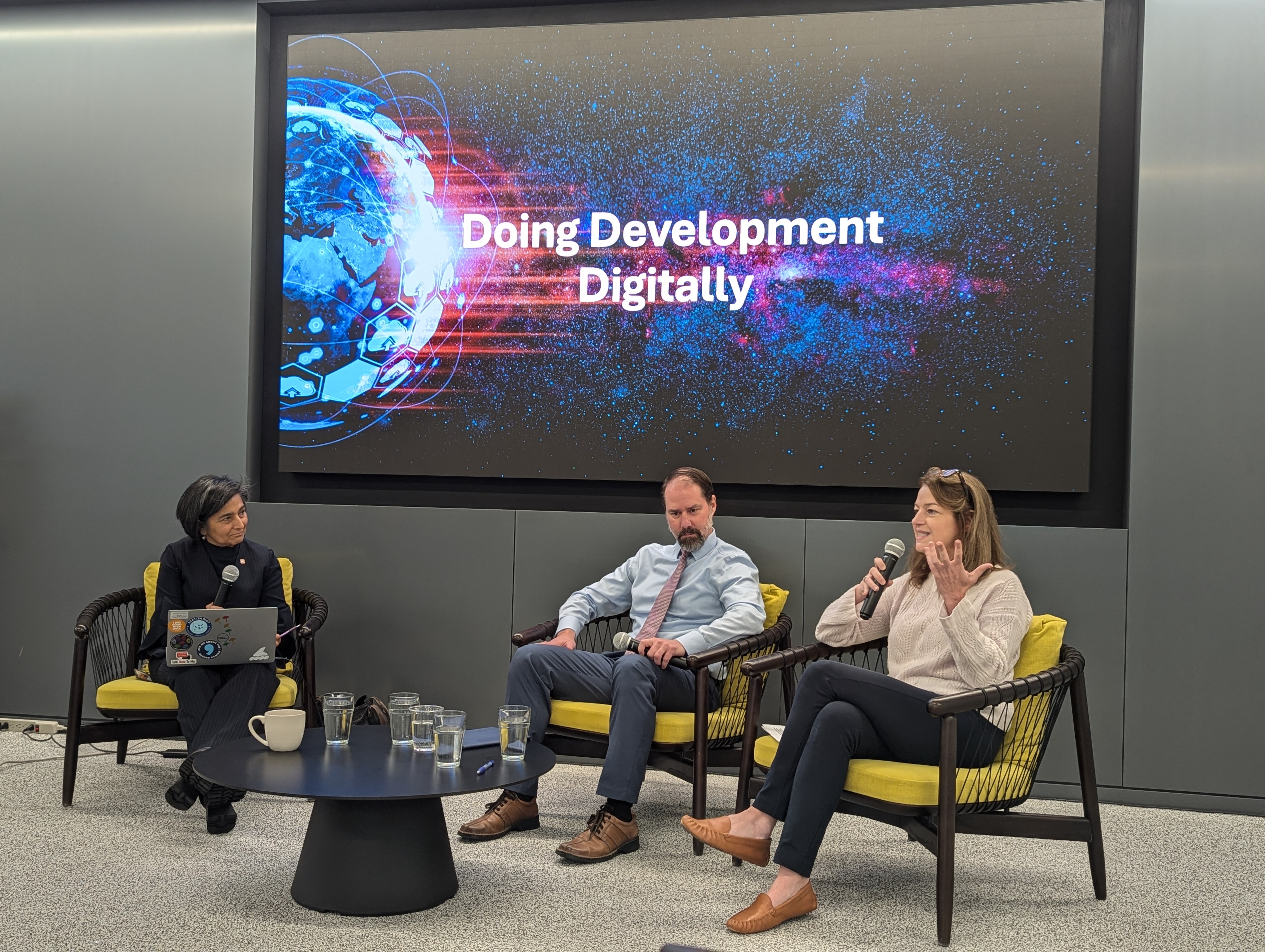By Lara Henneman, TechChange Special Projects and Communications
What are the implications of the USAID Digital Policy for implementing partners? Can the newly refreshed Digital Principles offer guidance? How can implementing partners engage with these frameworks in meaningful ways?
Long-time TechChange partner Chemonics hosted a hybrid event focused on these questions, Doing Development Digitally: The Next Decade of USAID’s Digital Policy, featuring USAID’s Chief Digital Development Officer, Chris Burns, USAID’s Senior Director of Policy for the Digital Impact Alliance, Kay McGowan, and Chemonics’ digital practice lead, Manisha Aryal, as moderator.
New Digital Policy provides vision for the future
Building on the 2020 Digital Strategy– the Agency’s first– the new Digital Policy is intended to set the course for the next ten years of investment towards what USAID calls “a future where digital technology promotes inclusive growth, fosters resilient and democratic societies, advances human rights, and empowers all, including the most vulnerable.” The policy outlines goals for this period, guiding principles, and a learning agenda to build the evidence base.
(Don’t have time to read the entire Policy document? PRO TIP: Check out this one page cheatsheet for a primer on the three goals of the new policy: Build, Transform, and Protect.)
From ‘digital development’ to ‘doing development in a digital world’
At the event, Chief Digital Development Officer Burns emphasized: “We are in a new era, a digital age…[but] What has stayed the same? The need to invest in the foundational components of a country’s digital ecosystem, the foundational rails on which digital technologies thrive.”
He pointed to the growth of agency expertise in support of this objective, including Digital Development Advisors who are posted to various Missions and inform the programming on-site, in partnership with host governments, along with the Country Digital Ecosystem Assessments that have been done.
Kay McGowan emphasized how the Digital Principles have changed to reflect updated priorities of doing development in a digital world: do no harm, strive for radical inclusion, and focus on the complex risks and opportunities stemming from the use of personal digital data. She expanded: “When the principles were first released, they were responding to a different moment. ‘Design with the user’ is really obvious now, but it wasn’t always. Ten years in, the world is now much more digital, with a much richer understanding of the opportunities but also the risks that technologies represent.”
But can we look the other way when ‘digital darlings’ commit abuses?
While the speakers shared their viewpoints, the audience honed in on an underlying point of controversy: the very countries often celebrated for digital development advances, such as India and Kenya, are often the same ones who inflict digital abuses on their populations through selective shut-downs and other repressive measures.
McGowan responded that “frameworks and strategies are not going to stop a sovereign state government from shutting down the internet. With migration and stresses, there is a greater risk of leaving so many people excluded, digital haves and have-nots, especially when you look at youth bulges in certain countries, people have to be more connected. This doesn’t mean we shouldn’t be fighting for more protections, but on balance we have to proceed with including more people.”
Despite political changes, still we persist
In the wake of an American election that means a transfer of power from one party to another, the question was raised about what this political change means for digital development at USAID. Chris Burns noted that “this is an area that’s continued to have bipartisan support. The work that we’ve been doing will continue into the [new] administration. When we look ten years down the road– the timeline for this policy–we acknowledge that this is a shared responsibility that every part of the sector has to embrace.
When asked about how this conversation would look different in five years, moderator Manisha Aryal shared that she hoped that the knowledge sharing and community building that is happening now at events like the TechChange-hosted Global Digital Development Forum, means that there will be more widespread integration of best practices and collaboration among the sectors.
TechChange CEO Nick Martin, also in attendance, agreed, adding, “Digital development is how we reach people, no matter who’s in power. Collaboration and connection is how we continue to share our experiences, build our effectiveness, and reach out intentionally to those who need it most.”




